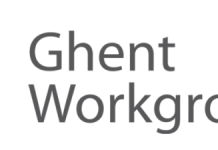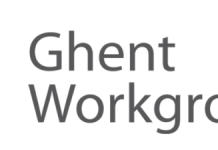Agfa’s Apogee Prepress workflow has reached a new milestone since passing the latest Ghent Workgroup (GWG) PDF preflight certification, addressing the highest level of preflight capability for reliable PDF processing.
The certification gained by Agfa includes the already-certified Enfocus PitStop preflighting software integrated in Apogee and adds Agfa’s own preflighting engine, ensuring that whichever option Apogee users select, they can be confident that their workflow will test incoming PDF files to the most rigorous level. Identifying potential output issues or file processing errors saves both time and materials, enabling printers to operate more productively and to identify recurring flaws in a supplied artwork so that both the creative and production workflows can be improved.
Erik Peeters, marketing manager Workflow Solutions, Agfa Graphics, commented on achieving the GWG certification, ‘Every day Apogee workflow systems worldwide process over one million PDF pages. Making sure that potential issues are detected early in the process is essential, so preflight has always been a key component of our workflow solutions. By using preflight profiles based on the GWG2015 specifications, our users can rely on a solid and proven set of checks that make sure final output meets their quality requirements.’
David Zwang, chairman, Ghent Workgroup, pointed out, ‘As a globally recognised workflow vendor, Agfa has been a valued participant in GWG initiatives and standards and it has done a great job in passing the Ghent Workgroup PDF preflight certification. Agfa has taken an important step in supporting the latest specifications; this is beneficial to all graphic arts associations and to the industry itself who will eventually use and profit from the new preflight profiles in Agfa’s workflow solutions.’
The GWG 2015 prefight certification is a validation of the prepress quality control specification developed by the GWG. It contains 14 different ‘variants’ aimed at different print market segments and output methods, all based on the ISO PDF/X-4 standard, but with additional conditions and restrictions relevant to each segment. The variants cover the majority of common print applications and include web- and sheetfed CMYK and/or spot colour, magazine and newspaper advertisements. Because the certification is based on the PDF/X-4 standard, it also includes variants which include the use of RGB colours within artwork files as well as ‘live’ transparency to support the most sophisticated and up-to-date graphic arts workflows.
The test suite used in the certification process comprises 260 test files that cover aspects such as correct detection of minimum image resolution, use of correct color spaces, white and grey overprint settings, ink coverage and spot colour usage and naming. File content that does not meet the necessary conditions is either flagged with an error message or with a warning, depending on the importance of the issue and how it could affect output.
Didier Haazen, senior innovation advisor, VIGC, added, ‘The preflight certification does not only check ‘bad’ cases where errors or warnings should be flagged, but adds positive vetting of ‘good’ examples where no messages should be presented. The test set is the result of years of expertise and real-world experience. The use of so many test files allows for thorough checking against the GWG2015 preflight requirements. The procedure guarantees consistency between different preflight applications, which is a huge benefit for end-users when making comparisons and purchasing decisions.’





















